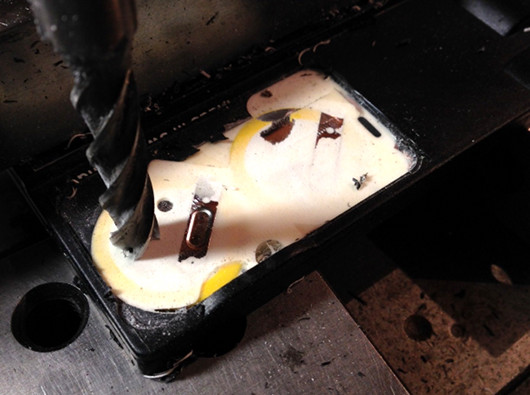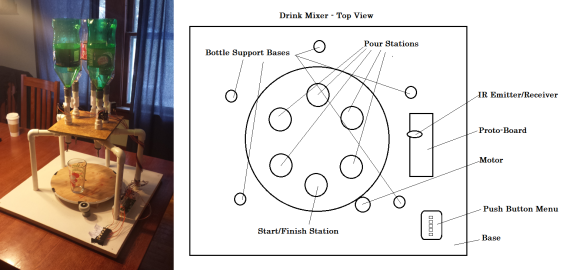[Unixgeek] owns an Optrel welding hood, which contains a lens that auto-adjusts for various welding tasks. It stopped working properly, and this hood is “Non-Serviceable”, so he had to either throw it away or hack it. The problem was that he knew it contained batteries, but they weren’t accessible. Using his milling machine, he was able to fix it himself. After removing the outer layer of plastic [Unixgeek] found that it was filled with foam. With continued milling he finally uncovered the batteries. They are standard CR2330 cells, so he could easily replace them, or set up a separate battery holder.
We like seeing this sort of hack, as simple as it is, because of how much we truly hate devices with planned obsolescence built in. This is a >$300 safety device that gets broken when some coin cells finally die. Any sort of hack to keep people from having to throw away their devices is a good thing.
Do you have a favorite planned obsolescence hack? Share it in the comments!



 [Sebastian] works at an engineering company testing car ECUs, head units, and all the confusing wiring harnesses found in the modern-day automobile. It’s good work, but not exactly fun, so [Sebastian]’s bosses bought a foosball table so the employees could unwind. The foosball tables have been there for several years, and now everyone at the company is really, really good at twirling little football players on a stick. With their current rule set (at least 6 goals and 2 goals ahead), matches last at least twenty minutes.
[Sebastian] works at an engineering company testing car ECUs, head units, and all the confusing wiring harnesses found in the modern-day automobile. It’s good work, but not exactly fun, so [Sebastian]’s bosses bought a foosball table so the employees could unwind. The foosball tables have been there for several years, and now everyone at the company is really, really good at twirling little football players on a stick. With their current rule set (at least 6 goals and 2 goals ahead), matches last at least twenty minutes.



 Hosting a New Year’s Eve party, but don’t want to be stuck behind the bar all night? You could set out a bowl or two of
Hosting a New Year’s Eve party, but don’t want to be stuck behind the bar all night? You could set out a bowl or two of 








